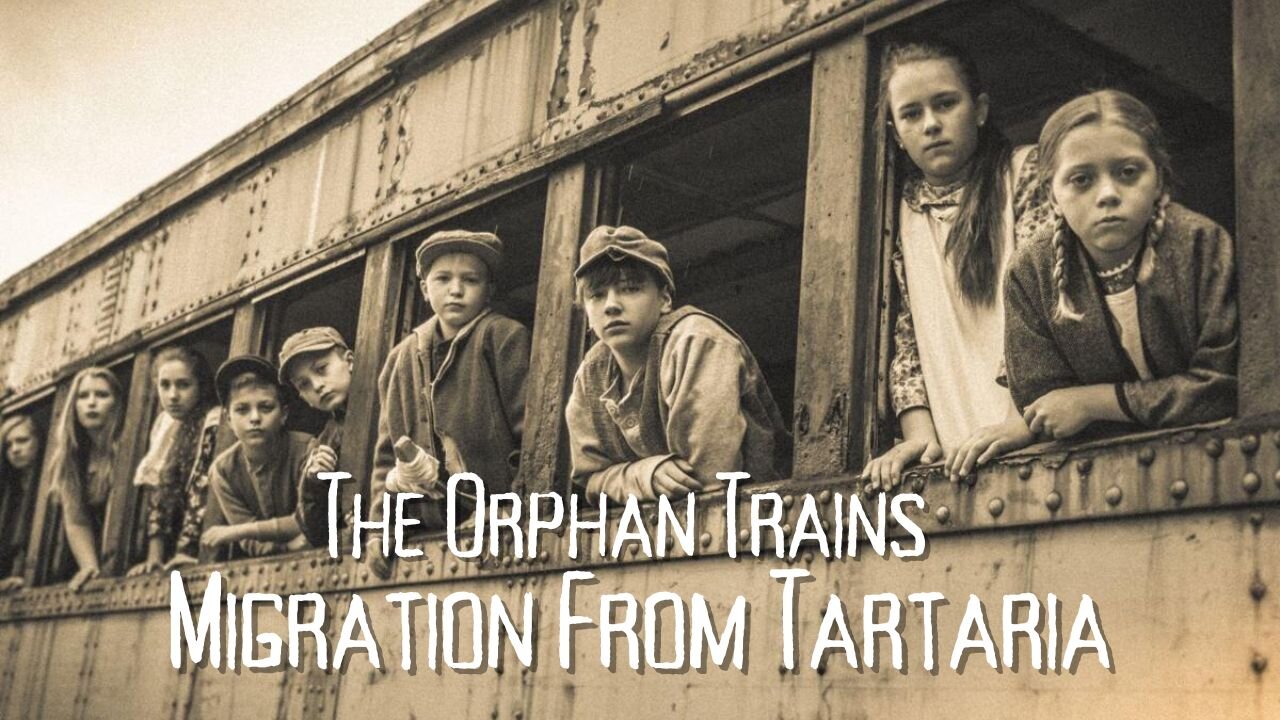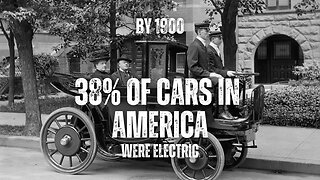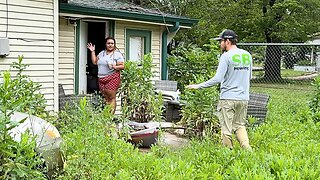Premium Only Content

The Orphan Train Migration From Tartaria
The Orphan Train Movement was a societal program that transported children from crowded Eastern cities of the United States & other parts of the world to foster homes located largely in rural areas of the Midwest in the U.S. The orphan trains operated between 1854 and 1929, relocating hundreds of thousands children. The co-founders of the Orphan Train movement claimed that these children were orphaned, abandoned, abused, or homeless, but this was not always true. They were said to be the children of new immigrants and the children of the poor and destitute families living in these cities. Criticisms of the program include ineffective screening of caretakers, insufficient follow-ups on placements, and that many children were used as strictly slave farm labor.
•
Three government institutions, Children's Village (founded 1851 by 24 philanthropists ), the Children's Aid Society (established 1853 by Charles Loring Brace) and later, New York Foundling Hospital, endeavored to intake these children. The institutions were supported by wealthy donors and operated by professional staff. The three institutions developed a program that placed homeless, orphaned, and abandoned city children, who numbered an estimated 30,000 [?] in New York City alone in the 1850s, in foster homes throughout the country. The children were transported to their new homes on trains that were labeled "orphan trains" or "baby trains". This relocation of children ended in 1930 due to decreased need for farm labor in the Midwest.
•
The first group of 45 children arrived in Dowagiac, Michigan, on October 1, 1854. The children had traveled for days in uncomfortable conditions. They were accompanied by E. P. Smith of the Children's Aid Society. Smith himself had let two different passengers on the riverboat from Manhattan adopt boys without checking their references. Smith added a boy he met in the Albany railroad yard—a boy whose claim to orphanhood Smith never bothered to verify. At a meeting in Dowagiac, Smith played on his audience's sympathy while pointing out that the boys were handy and the girls could be used for all types of housework.
•
-
 11:19
11:19
The Aquarius Bus
9 months agoBy 1900, 38% of cars in America were electric! Wanna know how they were powered & charged?
2.19K4 -
 LIVE
LIVE
CassaiyanGaming
1 hour agoClean Water Charity Stream Day 1 - Black Ops 6 Level Grinding
57 watching -
 LIVE
LIVE
PudgeTV
3 hours ago🟣 Greak: Memories of Azur | Gaming on Rumble | September Charity Water Campaign
75 watching -
 LIVE
LIVE
LarryDickmanGaming
10 hours agoI am what I am and that's all that I am.
41 watching -
 2:39:02
2:39:02
The Pascal Show
19 hours ago $2.14 earned'HE'S THE DEVIL!' Former Mother In Law Breaks Silence On Jake Haro & Emmanuel Haro Case
16.8K2 -
 5:30:10
5:30:10
SpartakusLIVE
14 hours ago#1 Verdansk Sniper gets HACCUSATIONS because of INSANE Headshots
62K4 -
 46:18
46:18
SB Mowing
3 days agoShe was LOSING HOPE but this SURPRISE CHANGED EVERYTHING
51.7K48 -
 10:00:10
10:00:10
ItsLancOfficial
13 hours agoWE LIVE 🔴WE LIVE 🔴 SUNDAY SUNDAYS!!!!!!! TARKOV
42.4K3 -
 4:09:32
4:09:32
EricJohnPizzaArtist
6 days agoAwesome Sauce PIZZA ART LIVE Ep. #59: Are You Ready for some FOOTBALL with GameOn!
53.2K8 -
 1:21:43
1:21:43
Jake Shields' Fight Back Podcast
19 hours agoJake Shields and Paul Miller!
83.7K144